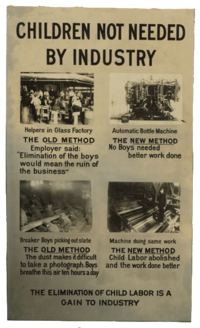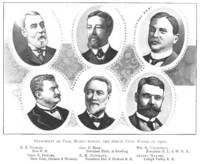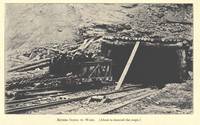The Anthracite Coal Strike

breaker boys.
"If the work of this Commission does not result in getting rid of this abominably, disgraceful evil of child-labor in Pennsylvania, then I think the people may well say that it has been a failure. You may not get rid of it at once, but no man ever lived that could make an excuse for it. I do not think any man ever lived that would not blush because of the money he gets from it. I was surprised that my friend Reynolds in his zeal should defend it,—defend the taking of a boy 12 years old, and setting him down to labor in this everlasting cloud, for 10 hours, or 8 hours, or any hours—for what? That you may get gold. That is all. Can any man frame an honest defense for it? Where are your sons and your daughters? Let me say this, that until you, Mr. Railroad President, or you Mr. Lawyer, will take your child by the hand and lead him up the breaker stairs and sit him down to pick at that trough of moving coal, until you will take your pale girl to the silk mills, let me speak for the children of the poor. Is there any one who can defend it? This custom has grown up in the State of Pennsylvania because there is money in it, and the industries of Pennsylvania are dependent upon it. Shame upon the industries of Pennsylvania if this is true! If it is so, of little avail have we protected this great State for half a century, if the result of all of it is that men shall grow rich from the labor of these small children." – Clarence Darrow during closing arguments on behalf of the United Mine Workers before the Anthracite Coal Strike Commission, February 13, 1903.
Pennsylvania Assistant Deputy Attorney General's interpretation of a 1909 Pennsylvania statute. The statute reduced the age when minors would be eligible to work inside an anthracite mine from sixteen to fourteen. From the Pennsylvania County Court Reports.
George F. Baer, president of the Philadelphia and Reading Coal and Iron Company, made this argument on behalf of the operators in the Anthracite Coal Strike.
Report to the President on Anthracite Coal Strike by Carroll Davidson Wright, Commissioner of Labor.President Roosevelt was sufficiently concerned about the anthracite strike that on June 8, 1902, he directed his Commissioner of Labor, Carroll D. Wright, to investigate the strike and report back with his findings. Wright believed that if he went to the anthracite region his presence would be disruptive, so he instead went to New York and interviewed key figures from both sides. He interviewed railroad presidents, bankers, independent mine operators and mine management personnel such as foremen and superintendents. He called on John Mitchell to come to New York so Wright could learn about the miners' side of the issues. Working diligently, Wright compiled a comprehensive report in 12 days which he sent to the President. Roosevelt was worried that he would seem too pro-union if the report was published. Newspapers accused the President of refusing to publish the report because it favored unions which Wright denied. The President made the report public in August of 1902.
Report to the President on the Anthracite Coal Strike Commission (1903).Report of the commission appointed by President Roosevelt at the request of both operator and miners, "to inquire into, consider, and pass upon the questions in controversy in connection with the strike in the anthracite region" of Pennsylvania, "and the causes out of which the controversy arose."
Arguments during Proceedings of the Anthracite Coal Strike Commission (1903).This transcript includes arguments given on behalf of both mine owners and mine workers during the Proceedings of the Anthracite Coal Strike Commission. Clarence Darrow's arguments start on page 9841, which is page 79 of this document.
Opening Argument for the Operators by James H. Torrey.James H. Torrey was counsel for the Delaware and Hudson Company.
Argument of H.T. Newcomb of Counsel for the Philadelphia and Reading Coal and Iron Company (1903).
Compilation of Grievances and Action Thereon, As decided by the Board of Conciliation.The Anthracite Coal Strike Commission established the Board of Conciliation on March 18, 1903. This compilation is from its first meeting in Pottsville, Pennsylvania on July 9, 1903, to and including the meeting at Wilkes-Barre, Pennsylvania, from September 29-30, 1903.
Report of the Department of Mines of Pennsylvania: Part 1 Anthracite 1905.Report on the fifteen Anthracite Districts in Pennsylvania.
Work of the Board of Conciliation Appointed by The Anthracite Coal Strike Commission For Three Years Ending March 31, 1906.The Anthracite Coal Strike Commission established the Board of Conciliation on March 18, 1903. This "permanent joint committee, to be called a "Board of Conciliation" would mediate grievances or disputes that could not be settled at the mine. The joint committee was to include three members representing a majority of mine workers and three members representing the operators from each district in the anthracite coal industry. In disputes where the Board could not reach a decision, the case went to an umpire appointed by a circuit judge from the United States 3rd Circuit. Any decision made by either the Board or an umpire was binding and final. While a grievance was in hearing, lockouts, strikes or suspension of work was not permitted. Decisions of the Board or umpire became common law for the anthracite industry with past decisions setting precedent for future settlements.
The Passing of the Breaker Boy by Florence I. Taylor, Publication Secretary, National Child Labor Committee (1917).Discussion of how mechanical pickers are replacing breaker boys in the coal mines. Published in the Child Labor Bulletin.
Written by Heman W. Chaplin, a leading equity lawyer.
Critical view of John D. Rockefeller and Standard Oil published in the Atlantic Monthly. Lloyd called Standard Oil the "greatest, wisest, and meanest monopoly known to history." The article was so popular it was published in seven editions and launched Lloyd's career as an anti-trust writer. William Dean Howells, assistant editor at the Atlantic Monthly, is credited with showing courage in publishing the article. In 1894, Lloyd wrote "Wealth against Commonwealth," a book-length study of Standard Oil. These criticisms of Rockefeller and Standard Oil established Lloyd's reputation as one of the most influential muckrakers in the country which in turn help lead to his being chosen by labor to represent the miners during before the Anthracite Coal Strike Commission. Both Lloyd and Howells were friends with Clarence Darrow.
The Operators Side of the Great Coal Strike by John Markle (1902).Published in Collier's Weekly..
Children of the Coal Shadow by Francis H. Nichols.Published in McClure's Magazine, this article details the adverse effects on children of coal mining families who live and work in nine "hard coal counties" of the Anthracite coal region of Pennsylvania.
The Right to Work: The Story of the Non-striking Miners by Ray Stannard Baker (1903).Investigation about the estimated seventeen thousand miners who continued to work in the anthracite mines during the strike and describes the violence they faced. Baker was a well-known muckraking journalist and in 1918 worked as President Woodrow Wilson's press secretary at Versailles. Published in McClure's Magazine.
Freight Factors by George F. Baer (1903).Published in Freight: The Shippers' Forum.
Warning from Labor's Counsel (1903).Commentary on address given by Clarence Darrow in Chicago on "The Perils of Trade Unionism."
The Anthracite Coal Strike and its Settlement (1903).A political science perspective on the strike from Political Science Quarterly.
George F. Baer Obituary (1914).Published in the Railway Age Gazette.
The Coal Strike of 1902--Turning Point in U.S. Policy by Jonathan Grossman.Article focusing on the roles of President Roosevelt and Commissioner of Labor, Carroll D. Wright, in ending the Anthracite strike. Published in the Monthly Labor Review from the U.S. Department of Labor.
News report about a speech Clarence Darrow's delivered at a YMCA meeting about the anthracite coal strike in which he denounced federal judges as tools of the railroads. From The Washington Bee.
In 1888, John Mitchell, a nineteen year old itinerant coal miner and second generation Irish immigrant although some sources say he was of Welsh ancestry. Although born in Illinois, Mitchell had traveled and worked out West before moving to Spring Valley where he got a job in one of the coal mines. In late 1888 and in 1889 many others miners, including Mitchell, lost their jobs when the Spring Valley Coal Company locked the miners out in an effort to reduce wages. Henry Demarest Lloyd was a forty-two year old journalist and reformer who wrote about the Spring Valley labor trouble in this book. Mitchell and Lloyd did not know each other during this 1889 labor struggle but they would both work together fourteen years later in the Anthracite Strike of 1902. Spring Valley is located in Northern Illinois on the Illinois River in Bureau County. It was founded in 1884 as an immigrant coal town in the center of a coal field region.
The Anthracite Coal Industry: A Study of the Economic Conditions and Relations of the Co-operative Forces in the Development of the Anthracite Coal Industry of Pennsylvania by Peter Roberts (1901)."In this work we have undertaken to describe and discuss the economic history and condition of the anthracite coal industry of Pennsylvania." Preface, at vii.
Organized Labor; Its Problems, Purposes, and Ideals and the Present and Future of American Wage Earners by John Mitchell (1903).John Mitchell was president of the United Mine Workers of America. He writes about the Anthracite Strike in the The Coal Strike of 1902.
A Trooper's Narrative of Service in the Anthracite Coal Strike, 1902 by Stewart Culin.The author was a private in the Second Troop Philadelphia City Cavalry.
Speech at the Mitchell, Darrow, Lloyd Reception (1903).Published in Men, the Workers in 1909 by Henry Demarest Lloyd.
Anthracite Coal Communities: A Study of the Demography, the Social, Educational and Moral Life of the Anthracite Regions (1904).A study by Peter Roberts, Ph.D which focuses on the social and moral life of anthracite miners. This contrasts with his work entitled, "The Anthracite Coal Industry," which focused on the miners' economic life.
The Slav Invasion and the Mine Workers: A Study in Immigration by Frank Julian Warne (1904).Investigation of the conflict between "so-called Slav races, including the Italian" in the competition for work with English-speaking mine workers from Ireland, England, Wales, Germany and Scotland in the anthracite coal fields of Northeastern Pennsylvania.
"Hard, Very Hard Coal" (1912).Chapter about the Anthracite Strike from Henry Demarest Lloyd 1847-1903: A Biography, by Caro Lloyd.
Conciliation and Arbitration in the Coal Industry of America by Arthur E. Suffern (1915).Extensive study of voluntary settlement methods used in numerous coal industry labor disputes.
Short bio of Henry D. Lloyd published in The Encyclopedia Americana: A Library of Universal Knowledge (1919).
Life in the Pennsylvania Coal Fields With Particular Reference to Women by Annie Marion Maclean (1909).Results of a six and one-half week study undertaken for the National Board of the Young Women's Christian Associations of the United States. Published in The American Journal of Sociology.
Johnny McCaffery: The Breaker Boy (1902).Clarence Darrow wrote a series of articles for Hearst's Evening American newspaper called "Easy Lessons in Law." He used this forum to illustrate shortcomings in the law that worked hardships on victims and legal areas in need of reform. In December 1902, in the aftermath of the Anthracite Strike that had captured the nation's interest, he published "The Breaker Boy" in the Chicago American. It tells the story of Johnny McCaffery to illustrate the issue child labor in coal mines. This typewritten draft is from the Special Collections Research Center, University of Chicago Library.
Proceedings of The Anthracite Mine Strike Commission.Reprinted from The Scranton Tribune 1902-03.
Partial List of Acts of Violence or Intimidation During the Anthracite Strike of 1902."This list has been prepared for the use of Counsel only, and has been compiled from newspapers and reports of Superintendents. Errors have been avoided as far as possible, but not all incidents cited have been verified."
Documents Relating to the Anthracite Strike of 1902.Wide variety of correspondence and other documents important to the Anthracite Strike.
George Baer's "Divine Right" Letter (1902).George Baer, president of the Philadelphia and Reading Railway Co. and spokesman for the operators, received a letter appealing to him as a good Christian to make concessions. Baer wrote in response that the "rights and interests of the laboring man will be protected and cared for - not by the labor agitators, but by the Christian men to whom God in His infinite wisdom has given the control of the property interests of the country." The United Mine Workers were able to exploit this "divine right" letter to help gain public support and shift opinion against the operators. Baer denied the authenticity of the letter.
Minutes of Special Convention of United Mine Workers of America Called to Consider the Anthracite Strike.Held in Indianapolis, Indiana, July 17, 18, and 19, 1902.
In Memoriam: Henry Demarest Lloyd May First, 1847 - September Twenty-Eighth, 1903.Henry Demarest Lloyd was a journalist and reformer who worked closely with Clarence Darrow during the three months of the Anthracite Commission hearings. Lloyd presented an argument to the Commission on behalf of the miners. This memoriam contains a brief address by Clarence Darrow that starts on page 29 which is page 16 of the pdf document.
Letter from John Mitchell to Clarence Darrow (1905).Mitchell wrote to Darrow because he had heard some miners were criticizing Darrow and accusing him of having a selfish motive in helping labor. As proof, these miners point to Darrow charging $10,000 for his work before the Anthracite Coal Strike Commission. This letter is also included in letter collection.
In the Shadow of the Coal Breaker by Owen R. Lovejoy, Acting Secretary, National Child Labor Committee (1906).Report about child labor in the Anthracite coal mines.
The Extent of Child Labor in the Anthracite Coal Industry by Owen R. Lovejoy, Assistant Secretary, National Child Labor Committee.1906 study of child labor in the anthracite coal region in Pennsylvania.
Philadelphia & Reading Railway Company.Financial information about George Baer's Philadelphia & Reading Railway Company published in The Manual of Statistics (1908).
Photos - Key Figures


























"I see that you are a religious man; but you are evidently biased in favor of the working man to control a business in which he has no other interest than to secure fair wages for the work he does. I beg of you not to be discouraged. The rights and interests of the laboring man will be protected and cared for, not by the labor agitators, but by the Christian men to whom God in His infinite wisdom has given the control of the property interests of the country."
Labor had a field day ridiculing Baer's "divine right" letter. The letter was a public relations disaster and helped turn public opinion against the operators and in support of the striking miners. Baer later denied the letter's authenticity.

"Several times I have been asked what in my opinion was the most important single incident in the labor movement in the United States and I have invariably replied: the strike of the anthracite miners in Pennsylvania ... from then on the miners became not merely human machines to produce coal but men and citizens.... The strike was evidence of the effectiveness of trade unions ..." Samuel Gompers, Seventy Years Of Life And Labor: An Autobiography 126 (1925). Library of Congress Prints and Photographs Division, LC-DIG-ggbain-00424.
Photos
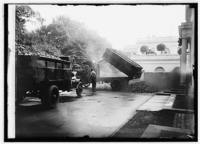
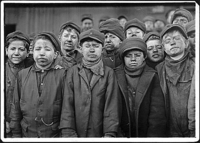












"the NCLC found a cultural icon-the breaker boy. The breaker boys, who endured some of the most grueling conditions among child workers anywhere, came to symbolize all that was wrong with child labor. If the chimney sweep is the symbol of British child labor it was the breaker boy in America." Hugh D. Hindman, Child Labor: An American History 90 (2002).
Photo from In the Shadow of the Coal Breaker by Owen R. Lovejoy, Acting Secretary, National Child Labor Committee.






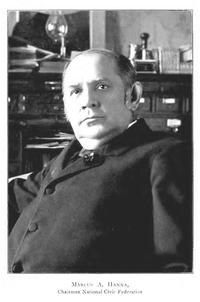



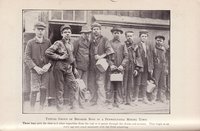


Brandeis replied by letter that he would gladly help without pay, but he was tied up with another case. However, Brandeis gave Darrow and Lloyd a law memorandum setting forth information they could use during the hearings. About fourteen years later, on June 4, 1916, Louis Dembitz Brandeis become an Associate Justice on the United States Supreme Court. Library of Congress Prints and Photographs Division, LC-DIG-ppmsca-06024.







